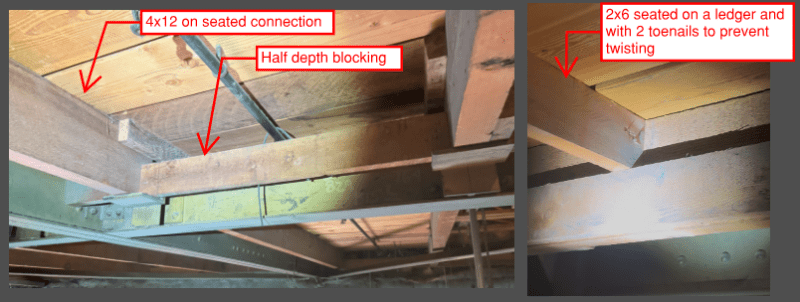Hello, this has been a discussion between some at my office and I wanted to get some additional opinions because we decided we don't know. NDS Section 3.3.3.4 states "where the depth of a bending member exceeds its breadth, d > b, lateral support shall be provided at points of bearing to prevent rotation," but what do you typically consider to satisfy this? Typically for new construction we ask for full depth blocking for everything, but this is existing.
Attached are two images that are in the field and have existed for a while and I would like to get some additional opinions if you would be comfortable signing off on this. Both mostly support live load and very little horizontal load.
The first one is blocking equal to half the depth of the beam. The beams are 4x12s and span about 20'.
The second one is (2) toenails on a 2x6 wood beam. The span is about 4'.
Any additional references that you could point me towards would be of great help. Thanks.
Edited: Fixed typos
Attached are two images that are in the field and have existed for a while and I would like to get some additional opinions if you would be comfortable signing off on this. Both mostly support live load and very little horizontal load.
The first one is blocking equal to half the depth of the beam. The beams are 4x12s and span about 20'.
The second one is (2) toenails on a 2x6 wood beam. The span is about 4'.
Any additional references that you could point me towards would be of great help. Thanks.
Edited: Fixed typos

